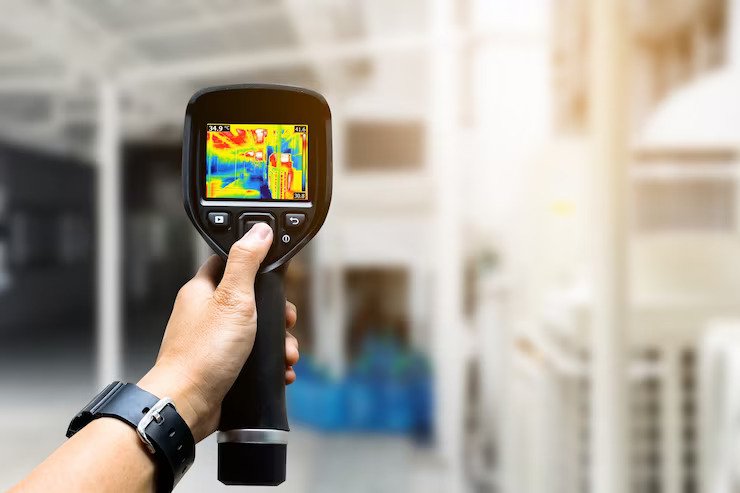 13 october, 2023
13 october, 2023
Temperature mapping is a process that is used to ensure that the temperature inside a storage
facility, such as a warehouse or refrigerated truck, is consistently maintained at the proper level.
This is important because variations in temperature can have a significant impact on the quality
and safety of the products being stored.
Temperature mapping involves taking a large number of temperature readings throughout the storage facility at different times and locations. These readings are then plotted on a map, which allows the facility manager to see the temperature variations within the facility. By analyzing this map, the facility manager can identify areas where the temperature is not within the required range and take steps to correct the problem.
There are several reasons why temperature mapping is important for businesses. Firstly, temperature variations can affect the quality of the products being stored. For example, food products that are stored at too high a temperature may spoil or become unsafe to eat. Similarly, pharmaceutical products that are stored at too low a temperature may become less effective or even lose their potency.
Temperature mapping is also important for ensuring the safety of the products being stored. Many products, such as chemicals and flammable materials, are sensitive to temperature changes and can become unstable if they are exposed to extreme temperatures. By ensuring that the temperature in the storage facility is consistently maintained within a safe range, the risk of accidents and incidents can be minimized.
In addition to its benefits for product quality and safety, temperature mapping can also help businesses to reduce their energy costs. If the temperature in a storage facility is not properly controlled, the facility may use more energy than necessary to maintain the desired temperature. By identifying and addressing temperature variations, businesses can improve the efficiency of their storage facilities and reduce their energy costs.
Overall, temperature mapping is an important process that helps businesses to ensure the quality, safety, and efficiency of their storage facilities. By consistently maintaining the proper temperature within a storage facility, businesses can protect their products and reduce the risk of accidents and incidents.
Temperature mapping involves taking a large number of temperature readings throughout the storage facility at different times and locations. These readings are then plotted on a map, which allows the facility manager to see the temperature variations within the facility. By analyzing this map, the facility manager can identify areas where the temperature is not within the required range and take steps to correct the problem.
There are several reasons why temperature mapping is important for businesses. Firstly, temperature variations can affect the quality of the products being stored. For example, food products that are stored at too high a temperature may spoil or become unsafe to eat. Similarly, pharmaceutical products that are stored at too low a temperature may become less effective or even lose their potency.
Temperature mapping is also important for ensuring the safety of the products being stored. Many products, such as chemicals and flammable materials, are sensitive to temperature changes and can become unstable if they are exposed to extreme temperatures. By ensuring that the temperature in the storage facility is consistently maintained within a safe range, the risk of accidents and incidents can be minimized.
In addition to its benefits for product quality and safety, temperature mapping can also help businesses to reduce their energy costs. If the temperature in a storage facility is not properly controlled, the facility may use more energy than necessary to maintain the desired temperature. By identifying and addressing temperature variations, businesses can improve the efficiency of their storage facilities and reduce their energy costs.
Overall, temperature mapping is an important process that helps businesses to ensure the quality, safety, and efficiency of their storage facilities. By consistently maintaining the proper temperature within a storage facility, businesses can protect their products and reduce the risk of accidents and incidents.
For more information and further details about our products, please contact us